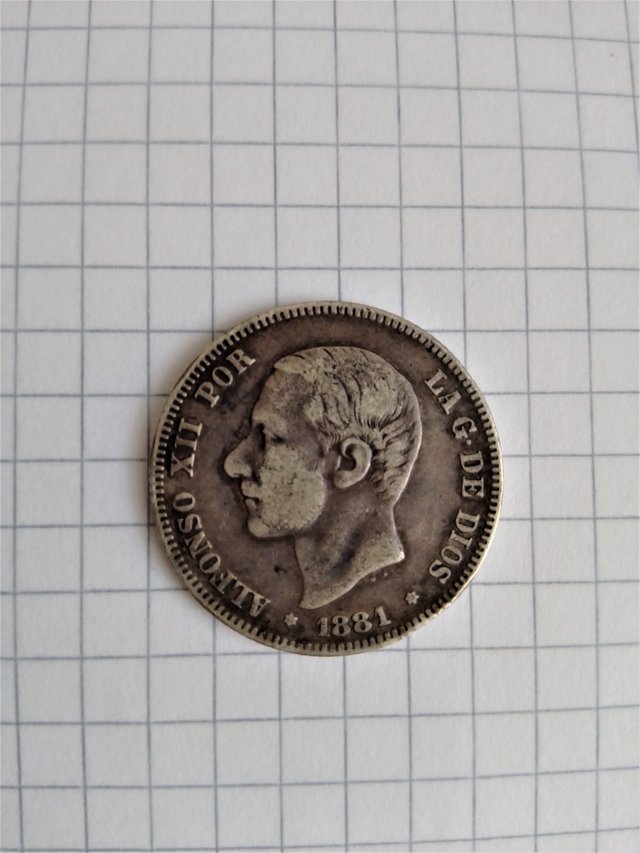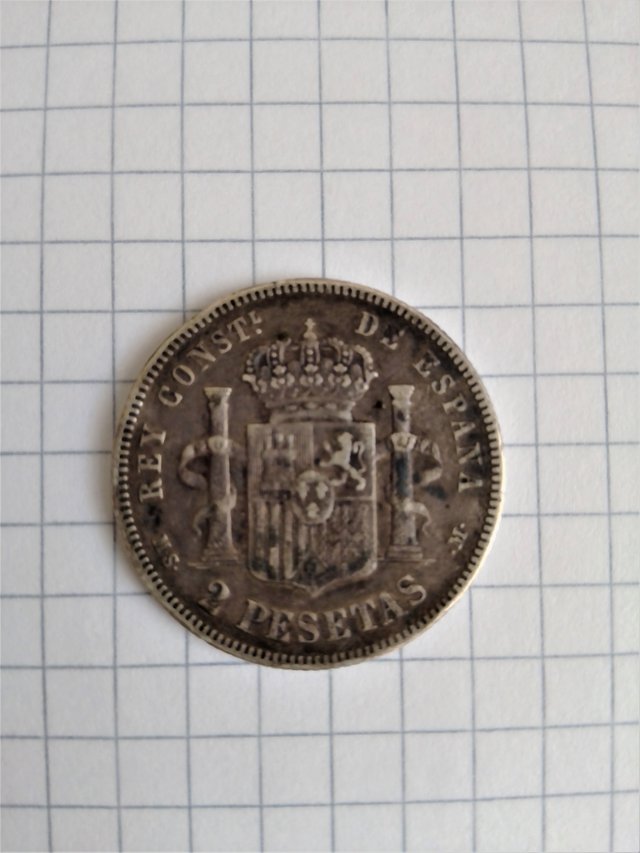Coin Collection #4 "2 Pesetas - spanish peseta" 1881 Spain


General information on pesetas
The first coins identified as pesetas were minted in Barcelona during the Napoleonic period between 1808 and 1814, and the first coin worth one peseta dates from 1809.
The peseta was introduced as the reserve currency on 19 October 1868, as part of the monetary reform of the Catalan Laureano Figuerola, who had come to Spain ten days earlier as Finance Minister of the revolutionary government under the reign of Serrano. The previous currencies, including the real and the escudo, were abolished and for the first time in Spain a purely decimal currency system was created, which remained in place until the introduction of the euro. The new currency was integrated into the Latin Monetary Union, which had been created a few years earlier. Initially, a peseta was exchangeable 1:1 into a French franc and an Italian lira. Coins initially appeared at 1, 2, 5 and 10 céntimos in bronze and at 20 and 50 céntimos and 1, 2 and 5 pesetas in silver. They show the seated España and the Spanish national emblem. In 1876, the first gold pesetas of 10 and 25 pesetas appeared, and later pieces at 20 and 100 pesetas in gold were added. Little changed in this system until the beginning of the Franco dictatorship.
After the Spanish Civil War, a high rate of inflation set in and the peseta quickly lost value. Only coins in iron, brass or aluminium were issued instead of precious metals. When the country stabilised at the end of the 1950s, new coins were issued at 10 and 50 céntimos in aluminium, at one peseta in Nordic gold, at 5, 25 and 50 pesetas in cupronickel and at 100 pesetas in silver. Whereas one peseta was worth 4.2 grams of silver in 1933, in 1966 it was only 0.15 grams, which corresponds to inflation by a factor of 28.
In the 1970s inflation increased again, which is why new coins were introduced from 1975. First, the 100 pesetas silver coin was replaced by a 100 pesetas coin that was not made of precious metal. On the occasion of the 1982 World Cup in Spain, a 50 céntimos coin appeared for the last time in 1980. From the mid-1980s, the 200 and 500 pesetas notes were replaced by 50 céntimos, although the notes remained valid until the introduction of the euro. Finally, from 1991 a completely new set of coins was introduced (1, 5, 10, 25, 50 (called the Spanish flower), 100, 200 and 500 pesetas), which remained in circulation until the introduction of the euro in 2002, although the 1-peseta piece, which was now made of aluminium, had largely disappeared from everyday life in the years before. New notes were also issued from 1991 onwards, replacing the old series, with the exception of the 200 and 500 pesetas. This series was designed by Reinhold Gerstetter, then head graphic artist at Deutsche Bundesdruckerei.
With the introduction of the euro as the unit of account on 1 January 1999, the official conversion rate was set at € 1 = 166.386 ₧
The euro was introduced in Spain in 2002, replacing the peseta as the country's currency. Only the Spanish National Bank or some service providers continue to change coins and notes of the former currency into euros after 2002. According to the National Bank, the exchange is possible until 31 December 2020.
Also in Andorra, the peseta (as well as the French franc) has been replaced by the euro as official currency.
Diese Münze ist 1881 geprägt worden. Man sieht den von König Alfonso XII.

Alfonso XII. (* 28 November 1857 in Madrid; † 25 November 1885 in El Pardo Palace) was King of Spain from 30 December 1874 until his death. His full name was Alfonso Francisco de Asís Fernando Pío Juan María de la Concepción Gregorio Pelayo de Borbón y Borbón.
Nominal value: 2 Pesetas (€ 1 = 166.386 ₧)
Country of issue: Spain
Year of minting: 1881
Weight: 10g
Material: silver
Clarity: 835/1000
Diameter: 27 mm
Thickness: 2 mm
Artist: Gregorio Sellan Gonzalez
Number of issues:
Orientation: Coin alignment ↑↓
Observe:
Head to left, date below.
Lettering:
ALFONSO XII POR LA G· DE DIOS
- 1883 *
Reverse:
Crowned arms, pillars, value below.
Lettering:
REY CONSTL. DE ESPAÑA
M·S· 2 PESETAS ·M·
Edge: Reeded
Thanks for reading, giving advises and voting.
Sincerly